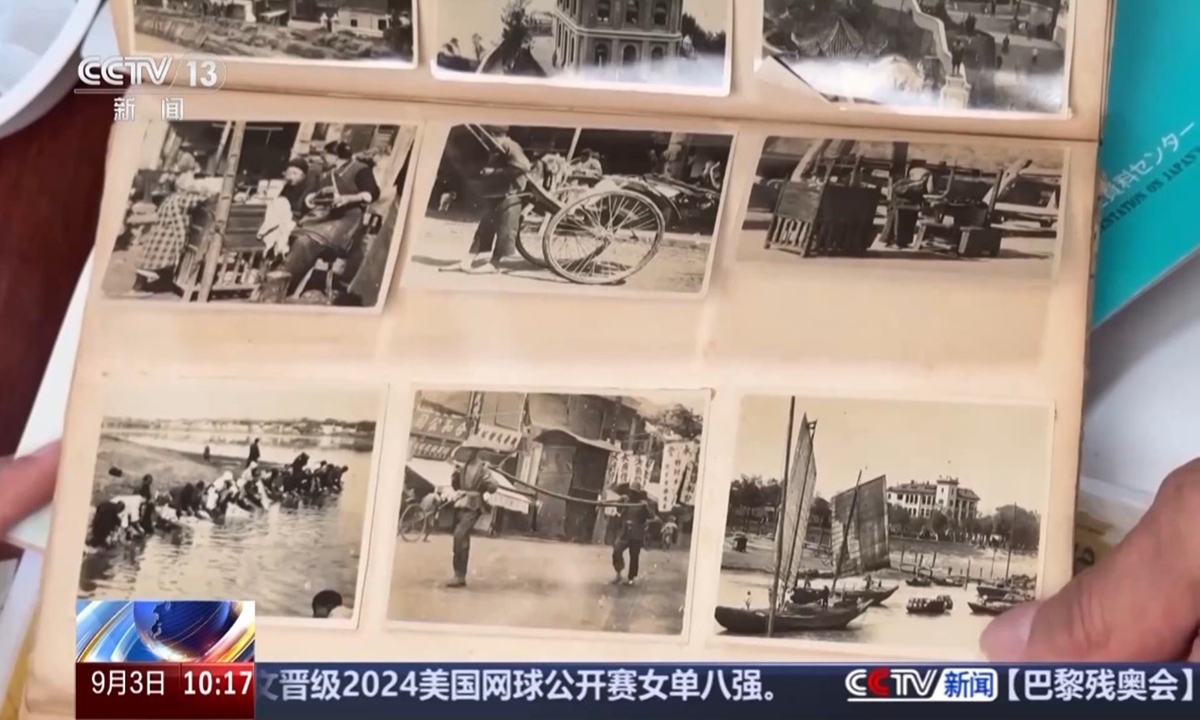
Photo: CCTV
A descendant of the former Unit Ei 1644 Japanese troops has recently published a collection of photographs during the troops' invasion of China, shedding light on the secrets of this notorious unit, which carried out germ warfare and performed germ experiments on Chinese people, according to China Central Television (CCTV) on Tuesday.
The Unit Ei 1644 Japanese troops was established in April 1939 in East China's Nanjing after the Japanese troops captured the city. It claimed to be the Central China Epidemic Prevention and Water Purification Department, but was actually a large-scale research facility for germ and gas warfare.
It mainly carried out research and experiments on deadly bacteria, mass production of bacteriological warfare agents, and carried out bacteriological warfare in East China.
The 76-year-old descendant, Katsutoshi Takegami, discovered several photo albums among his late father's possessions while sorting through old belongings years ago. The photos documented the activities of the invading Japanese army's Epidemic Prevention and Water Purification Department in East and Central China, CCTV reported. However, his father hardly mentioned his experiences in China during his lifetime.
Takegami discovered that his father had been to China three times as a medic (or hygiene officer) since 1937 and in 1941 he was transferred to the Unit Ei 1644 Japanese troops.
However, while his father's military experiences in other units are documented in government files, there is limited information available from the Japanese government about the experience at the Unit Ei 1644 Japanese troops.
There is a list of soldiers who had served in the Unit Ei 1644 Japanese troops, but it has not been disclosed publicly, according to Takegami. Takegami was only able to access the section concerning his father. While the entire list does exist, the Japanese government cited privacy concerns and only provided information about his father, withholding the details he was most eager to uncover.
Takegami said people described the unit as the "last secret unit."
Unable to retrieve the roster and documents, he began to search for some historical reports. In one of the testimonies of former members of Unit Ei 1644 Japanese troops published in 1995, there was a reference to a testimony that the Unit Ei 1644 Japanese troops had conducted bacteriological warfare experiments in East China's Zhejiang, Jiangsu and other places in China.
Takegami then reached out to Keiko Suenaga, an associate professor at Fukushima Medical University, who has been researching the history of germ warfare carried out by the Japanese troops during their invasion in China.
Suenaga said the Unit Ei 1644 Japanese troops should have burned the documents when they retreated in order not to leave evidence, so there are no records available. This is similar to what happened with Unit 731. It was reported that they would dig a pit, pour oil over the documents, and burn them.
Unit 731 was a top-secret biological and chemical warfare research facility established in Harbin, in Northeast China's Heilongjiang Province. It served as the nerve center for Japanese biological warfare in China and Southeast Asia during World War II.
The Japanese army had used anthrax and plague, sowing germs through airplanes. They coated fruits with cholera germs, and people unknowingly ate them and got infected. Such acts of germ warfare actually existed, Suenaga said.
Suehaga hopes that Takegami can compile and publish these hard facts of bacteriological warfare conducted by the Japanese army.
Takegami thinks it would be valuable if he could discover the historical truth through his investigation of his father's case.
He will also continue to do his best to find ways and visit the relevant people in order to find out the truth about the Unit Ei 1644 Japanese troops.
In August, Hideo Shimizu, a former member of Unit 731, the notorious Japanese germ-warfare detachment,
identified the crimes of the Japanese army at the site where he served 79 years ago in China.




